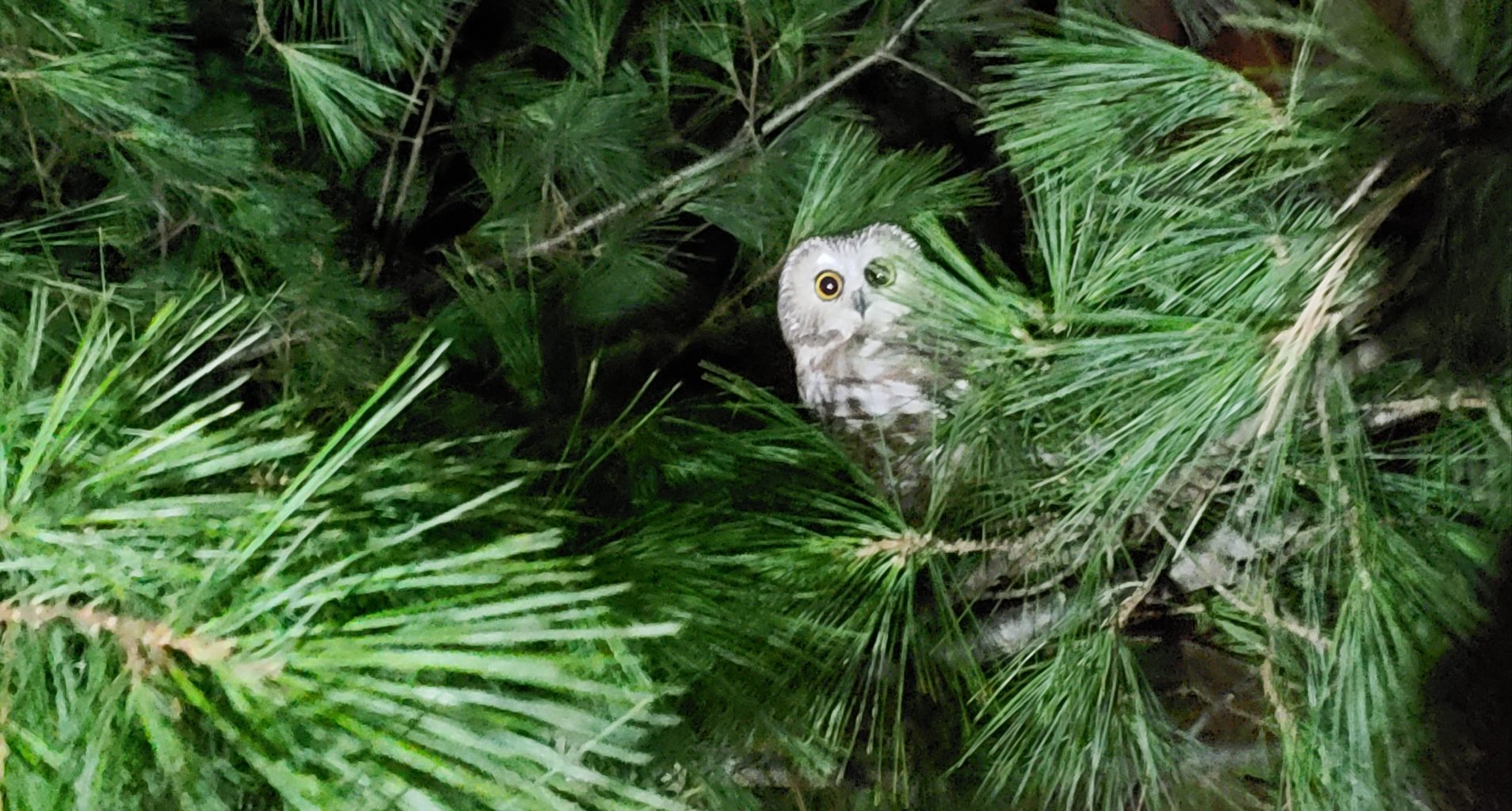Owl Season Recap: new friends, old friends, and 312 sharp talons in 2020

By Sean Beckett
NBNC Director of Natural History and Community Science Programs
The Northern Saw-whet Owl migration season is over, and results are in! Our staff and apprentices banded 78 owls this year, bringing North Branch Nature Center’s grand total to 716. While not our largest year on record (181 in 2018), this season still brought plenty of excitement.
October dealt a lot of rainy weather, but we still managed to band on 15 nights this fall. More than a third of this season's owls visited the station on the night of October 11th, when we caught 27 birds in just over four hours! This sudden influx of southbound owls was likely due to the variable weather-- the night was cool, crisp, and moonless, with steady winds blowing from the north. These ideal migration conditions followed many dreary days with south winds, conditions that cause migrants to hunker down and wait for better skies.
Of this season’s 78 captures, we wanted to highlight a few special visitors that joined us on October 14th. On this evening, we were first visited by our friend 1104-06117 (we “name” the owls by their unique band identification number), who we first banded here at NBNC last year. Most owls captured at NBNC spend winters in the southern Appalachians, then spend summers in Canada, so it is delightful to find one migrating through the North Branch corridor year after year.
At the very same time, and in the same 40-foot mist net, we caught a second owl alongside our friend above. This visitor was already wearing band number 1014-82112! Upon investigation, we learned that this owl was banded 430 miles away in Maryland as a two-year-old back in 2016! Given that 92% of recaptured saw-whets are three years old or younger, this bird marks the oldest known saw-whet to ever visit NBNC!
Later that same evening, we caught one more bird in our nets that we banded as 1104-21259. This healthy, one-year-old female owl was in the middle of her very first southbound migration. Exactly one month later on November 14th, she visited another owl bander 500 miles south of us in Bergton, Virginia! She had increased her body weight over 10% in the intervening month, and is now presumably wintering comfortably down south.
We are also delighted to report that this owl was (symbolically) adopted just last week through our Adopt-an-Owl program! Thanks to our owl adopters, we are able to conduct this fascinating research and discover stories like that of 1104-21259. Thank you to all who have adopted owls this season. If you would like to learn more about our owl adoption program, please visit our Owl Banding Website.
This eventful October night exemplifies what our research is all about: learning about the movement of wildlife across the landscape, making connections between researchers around the country, and helping to conserve a remarkable little predator that is as extraordinary as it is cute.
If you'd like to see our research in action, check out this recording of our first-ever Owl Banding Demonstration Livestream Event below and at our Online Bird Banding Station, made possible by The Oakland Foundation. While the ongoing pandemic limited our ability to welcome the public at our research station, we've made up for it this year with an excellent virtual demonstration!
Finally, we’d like to thank our fantastic banders and apprentices, whose time and talents drive our research!

